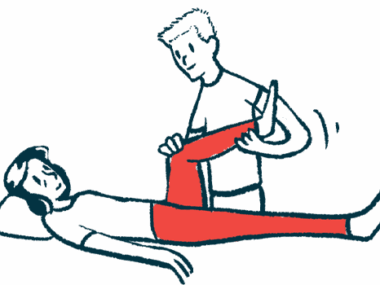Existing in the tension between thoughts and actions, part 2
Challenging the idea that there is a dichotomy between mind and body
Written by |

Last in a series. Read part one.
In her latest fantasy novel, “Katabasis,” R.F. Kuang constructs a character who serves as both an oppositional moral force for her two protagonists and as a goal that her protagonists pursue to the farthest reaches of hell. That character is Jacob Grimes, a Cambridge professor who Kuang uses to explore the complex toxicities that arise in some of the worst examples of academia. Grimes is a clever, egotistical, and ambitious professor who wields his power over others. However, he is also a reliable gateway to academic success for aspiring professionals in the world Kuang created.
He’s also the character who voices support for some of the ideas that challenged me the most when I read the book. Among them is his belief in the supremacy of a life of ideas over the body. At one point, Grimes expresses deep envy for an acquaintance who, due to a childhood illness, was bedridden. “Her mind transcended to pure abstraction — her body was an afterthought,” Grimes observes.
The way Grimes and his contemporaries continue to romanticize the wholesale dismissal of anything that doesn’t hone the mind continues throughout “Katabasis.” It needled me, and ultimately prompted me to take a step back and pinpoint the source of my discomfort. I think it was the premise that the needs of the body and mind are in conflict. It also bothered me because I live with Charcot-Marie-Tooth (CMT) disease, which really sucks.
Life expressed through action
In her latest book, “On Muscle: The Stuff That Moves Us and Why It Matters,” science writer Bonnie Tsui considers the idea that there is a dichotomy between mind and body. But unlike in the fictional world of “Katabasis,” where Grimes and his contemporaries believe this to be true, Tsui refutes the notion.
“Our brain and muscles are in constant conversation with each other, sending electrochemical signals back and forth; our long-term brain health depends on muscles — and moving them — especially when it comes to aging bodies,” Tsui writes.
Neuropathies like CMT exemplify the impossibility of separating our nervous system from our muscular system. Each of our body’s systems and functions is intertwined with the others. When one aspect of our health struggles or fails, it can profoundly affect our life and well-being.
Oftentimes, for this reason, illnesses, disability, and chronic conditions cause us to be hyperaware of our bodies. Rarely, if ever, do they grant us transcendence and freedom to focus more intently on intellectual pursuits.
For this reason, one of the characters in “Katabasis” questions Grimes because the character’s illness “never let him forget how embodied he was.”
“Finally, a character who knows the struggle,” I thought, reading that passage.
One of the most frustrating things for me about characters that romanticize toxic beliefs about their bodies was my feeling that many of these largely able-bodied characters don’t recognize just how good they have it.
Yes, the mind can form beautiful ideas. However, the brain communicates with our bodies to actualize those thoughts. It’s this transformation of thought to action that is the foundation of many life experiences. It’s also why neuropathies like CMT impede that process, like a musical passage left unresolved.
Much of life is expressed and experienced through action, intentionally or not. Charles Darwin notes in “The Expression of the Emotions in Man and Animals” the way humans clap and jump, and how dogs bark and bound in recognition of anticipation and joy.
Religions recognize actions as well. Many codify kneeling, standing, genuflecting, walking barefoot in sacred spaces, submersion in water, sitting cross-legged in silence, and extended periods of walking in meditation as methods of connecting with the divine.
Because of these aspects of life, I’m forced to reconcile my jealousy of people I perceive as more able than myself with my aspirations and what my body is actually capable of doing. Indeed, while the lives of folks with disabilities and chronic conditions are certainly filled with meaning, fulfillment, and joy, any sort of romanticization is rarely welcome, in my opinion.
Note: Charcot-Marie-Tooth News is strictly a news and information website about the disease. It does not provide medical advice, diagnosis, or treatment. This content is not intended to be a substitute for professional medical advice, diagnosis, or treatment. Always seek the advice of your physician or other qualified health provider with any questions you may have regarding a medical condition. Never disregard professional medical advice or delay in seeking it because of something you have read on this website. The opinions expressed in this column are not those of Charcot-Marie-Tooth News or its parent company, Bionews, and are intended to spark discussion about issues pertaining to Charcot-Marie-Tooth.







Denise Nobles
Myself and my father's side of the family have CMT. I would love more information. A lot of doctors say they've never heard of it. Its a real thing!